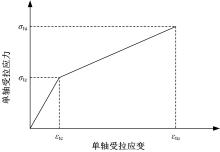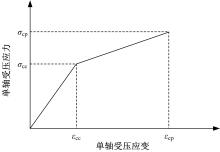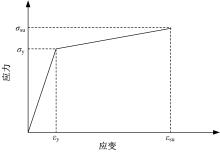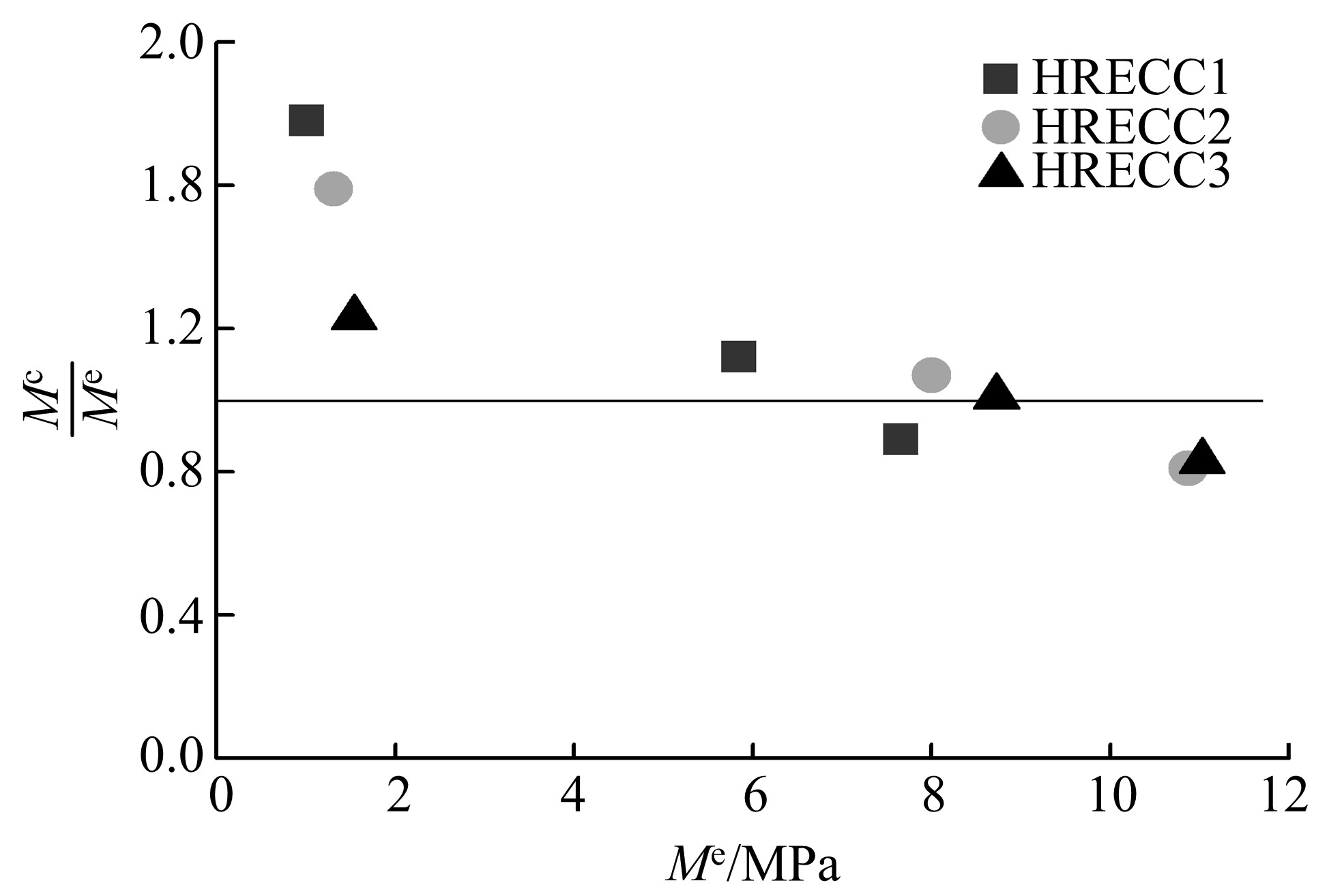Journal of Jilin University(Engineering and Technology Edition) ›› 2019, Vol. 49 ›› Issue (4): 1153-1161.doi: 10.13229/j.cnki.jdxbgxb20180174
Theoretical on flexural behavior of ultra high strength rebar reinforced engineered cementitious composites beam
Bi⁃xiong LI1,2( ),Qiao LIAO1,2,Yi⁃ping ZHANG3,4,Lian ZHOU3,4,Ping WEI3,4,Kan LIU1,2
),Qiao LIAO1,2,Yi⁃ping ZHANG3,4,Lian ZHOU3,4,Ping WEI3,4,Kan LIU1,2
- 1. College of Architecture and Environment, Sichuan University, Chengdu 610065, China
2. Key Laboratory of Deep Underground Science and Engineering for Ministry of Education, Sichuan University, Chengdu 610065, China
3. Sichuan Provincial Architectural Design and Research Institute, Chengdu 610072, China
4. Sichuan Engineering and Technology Research Center of Architecture Industrialization, Chengdu 610072, China
CLC Number:
- TU375.1
| 1 | Li V C , Leung C K Y . Steady⁃state and multiple cracking of short random fiber composites[J]. Journal of Engineering Mechanics, 1992, 118(11): 2246⁃2264. |
| 2 | Li V C . From micromechanics to structural engineering——the design of cementitious composites for civil engineering applications [J]. Journal of Structural Mechanics and Earthquake Engineering,1993,10(2):37⁃48. |
| 3 | Said S H , Razak H A . The effect of synthetic polyethylene fiber on the strain hardening behavior of engineered cementitious composite (ECC)[J]. Materials and Design, 2015, 86: 447⁃457. |
| 4 | Dehghani A , Nateghi⁃Alahi F , Fischer G . Engineered cementitious composites for strengthening masonry infilled reinforced concrete frames [J]. Engineering Structures, 2015, 105: 197⁃208. |
| 5 | Khan M I , Abbass W . Flexural behavior of high⁃strength concrete beams reinforced with a strain hardening cement⁃based composite layer [J]. Construction and Building Materials, 2016, 125: 927⁃935. |
| 6 | 乔治, 潘钻峰, 梁坚凝, 等 . ECC/RC组合梁受弯性能试验研究与分析[J]. 东南大学学报: 自然科学版, 2017, 47(4): 724⁃731. |
| Qiao Zhi , Pan Zuan⁃feng , Liang Jian⁃ning , et al . Experimental study and analysis of flexural behavior of ECC/RC composite beams[J]. Journal of Southeast University(Natural Science Edition),2017,47(4): 724⁃731. | |
| 7 | Yuan Fang , Pan Jin⁃long , Dong Luo⁃ting , et al . Mechanical behaviors of steel reinforced ECC or ECC/concrete composite beams under reversed cyclic loading[J]. Journal of Materials in Civil Engineering, 2014, 26(8): 86⁃88. |
| 8 | Xu Shi⁃lang , Hou Li⁃jun , Zhang Xiu⁃fang . Flexural and shear behaviors of reinforced ultrahigh toughness cementitious composite beams without web reinforcement under concentrated load[J]. Engineering Structures, 2012, 39(10): 176⁃186. |
| 9 | Li Qing⁃hua , Xu Shi⁃lang . A design concept with the use of RUHTCC beam to improve crack control and durability of concrete structures[J]. Materials and Structures, 2011, 44(6): 1151⁃1177. |
| 10 | Meng Dan , Huang Ting , Zhang Y X , et al . Mechanical behaviour of a polyvinyl alcohol fibre reinforced engineered cementitious composite (PVA⁃ECC) using local ingredients [J]. Construction & Building Materials, 2017, 141:259⁃270. |
| 11 | Paegle I , Fischer G . Phenomenological interpretation of the shear behavior of reinforced engineered cementitious composite beams [J]. Cement and Concrete Composites, 2016, 73: 213⁃225. |
| 12 | Maalej M , Li V C . Flexural/tensile strength ratio in engineered cementitious composites[J]. Journal of Materials in Civil Engineering, 1994, 6(4): 513⁃528. |
| 13 | Zhou Jia⁃jia , Pan Jin⁃long , Leung C K Y . Mechanical behavior of fiber⁃reinforced engineered cementitious composites in uniaxial compression[J]. Journal of Materials in Civil Engineering, 2014, 27(1): 04014111. |
| 14 | Mohammed B S , Nuruddin M F , Aswin M , et al . Structural behavior of reinforced self⁃compacted engineered cementitious composite beams[J]. Advances in Materials Science and Engineering,2016,225:1⁃12. |
| 15 | Noushini A , Samali B , Vessalas K . Ductility and damping characteristics of PVA⁃FRC beam elements[J]. Advances in Structural Engineering, 2015, 18(11): 1763⁃1788. |
| 16 | Cai Jing⁃ming , Pan Jin⁃long , Yuan Fang . Experimental and numerical study on flexural behaviors of steel reinforced engineered cementitious composite beams[J].Journal of Southeast University, 2014, 30(3): 330⁃335. |
| 17 | Yuan Fang , Pan Jing⁃long , Wu Yu⁃fei . Numerical study on flexural behaviors of steel reinforced engineered cementitious composite (ECC) and ECC/concrete composite beams[J]. Science China Technological Sciences, 2014, 57(3): 637⁃645. |
| 18 | 薛会青, 邓宗才 . HRECC梁弯曲性能的试验研究与理论分析[J]. 土木工程学报, 2013, 46(4): 10⁃17. |
| Xue Hui⁃qing , Deng Zong⁃cai . Experimental and theoretical studies on bending performance of HRECC beams[J]. China Civil Engineering Journal, 2013, 46(4): 10⁃17. |
| [1] | NI Ying-sheng,SUN Qi-xin,MA Ye,XU Dong,LIU Chao. Shear distribution of multi-cell corrugated steel web composite beams based on space grid analysis [J]. Journal of Jilin University(Engineering and Technology Edition), 2018, 48(6): 1735-1746. |
| [2] | YAN Ya-bin, WANG Xiao-yuan, WAN Qiang. Low-cycle fatigue fracture behavior of nanoscale interface [J]. 吉林大学学报(工学版), 2017, 47(4): 1201-1206. |
| [3] | CHEN Jiang-yi, LIU Bao-yuan. Influence of fiber fracture damage on dispersion characteristic of guided wave in composite plate [J]. 吉林大学学报(工学版), 2017, 47(1): 180-184. |
| [4] | MENG Guang-wei, FENG Xin-yu, ZHOU Li-ming, Li Feng. Structural reliability analysis based on dimension reduction algorithm [J]. 吉林大学学报(工学版), 2017, 47(1): 174-179. |
| [5] | YANG Hui-yan, HE Xiao-cong, ZHOU Sen. Simulation and calculation methods for clinched joint strength [J]. 吉林大学学报(工学版), 2015, 45(3): 864-871. |
| [6] | ZHANG Qing,WANG Lei. Internal force analysis of multiple rows of piles based on differential equation set [J]. 吉林大学学报(工学版), 2014, 44(5): 1327-1333. |
| [7] | ZHAO Shi-jia, XU Tao, CHEN Wei, TAN Li-hui. Efficient approach for modal sensitivity analysis for near defective systems [J]. 吉林大学学报(工学版), 2013, 43(增刊1): 497-499. |
| [8] | XU Tao, ZHAO Shi-jia, ZHANG Wei, TAN Li-hui, LV Gang, LI Heng. Perturbed origin shift combined approximation method of N repeated defective systems [J]. 吉林大学学报(工学版), 2012, 42(增刊1): 147-150. |
| [9] | YAN Guang, FAN Zhou, LI Zhong-hai, CHENG Xiao-quan, LIU Ke-ge, ZUO Chun-cheng. Analysis and design of composite cylindrical shell with cover [J]. , 2012, (06): 1437-1441. |
| [10] | JIANG Hao, GUO Xue-dong. Concrete bridge modal parameter identification under seismic excitations [J]. 吉林大学学报(工学版), 2011, 41(增刊2): 185-188. |
| [11] | TIAN Wei, GUO Xue-dong, YIN Xin-sheng. Theoretical and experimental research on oblique cross-section cracking resistance of wall-beam by concrete hollow block [J]. 吉林大学学报(工学版), 2011, 41(增刊2): 189-193. |
| [12] | LI Chun-liang, WANG Guo-qiang, LIU Fu-shou, ZHAO Kai-jun. Mechanical behavior analysis of shield segment structure [J]. 吉林大学学报(工学版), 2011, 41(6): 1669-1674. |
| [13] | ZHANG Dao-ming, GUO Xue-dong, ZHAO Zhi-meng. Bending damage analysis of reinforced concrete beam using perturbation method [J]. 吉林大学学报(工学版), 2011, 41(05): 1358-1363. |
| [14] | CHEN Geng-Ye, WANG Yan-Zhao, YAO Zhan-Wei. Stressinduction EMF changing with load for parallelchord steel trusses [J]. 吉林大学学报(工学版), 2010, 40(增刊): 222-0227. |
| [15] | JIA Chao, JI Sheng-Zhen, ZHANG Feng. Timedependent reliability of concrete pier of Tsingtao bay bridge [J]. 吉林大学学报(工学版), 2010, 40(06): 1543-1549. |
|
||















